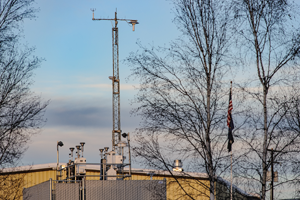Climate Adaptation and Outdoor Air Quality

EPA works with states, tribes, and communities to assure healthy air quality. Climate change may make it more difficult for communities to attain air quality standards that protect human health and the environment. Climate change is expected to increase average temperature, and frequency and intensity of extreme weather events such as heat waves, droughts, and storms.
Ground-level ozone
Climate change may increase the occurrence of ground-level ozone as temperatures rise. An increase in ground-level ozone can increase the number of poor air quality days and complicate efforts by communities to maintain or achieve National Ambient Air Quality Standards (NAAQS). Unless offset by additional ozone precursor emissions reductions, these climate-driven increases have the potential to lead to greater public health impacts from ozone pollution. The length of the ozone season can also increase.
Particulate matter
As the climate continues to change, forest fires are likely to increase in frequency, severity, and distribution in the Southeast, the Intermountain West, and the West. Particulates, including those from wildfires, can travel long distances, reduce visibility, and cause environmental damage. As a result, particulate matter pollution in some locations around the country may increase.
